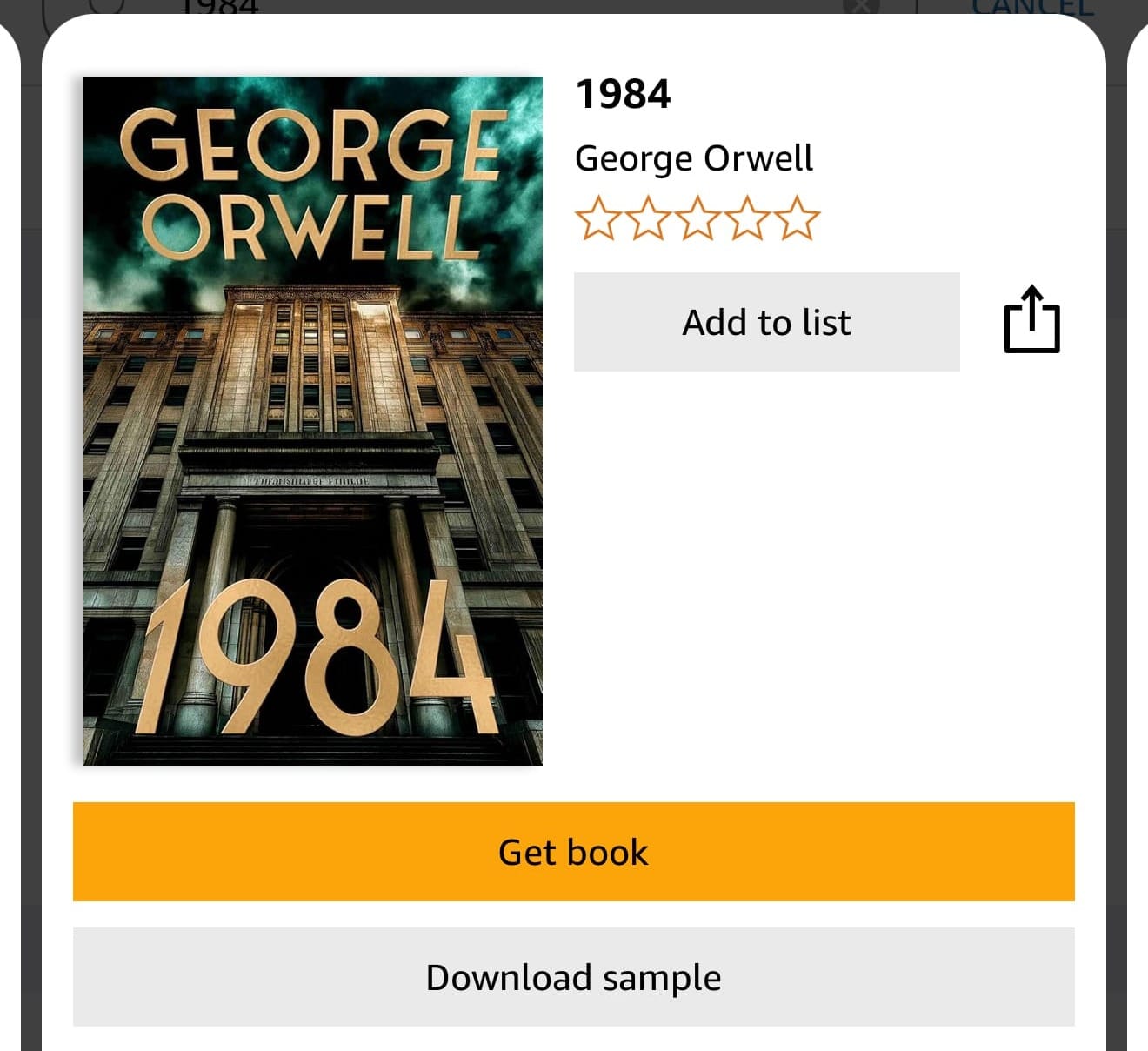“Get Book”

It’s one thing to know something is idiotic and customer hostile, it’s another to see it. Such was the case with a single little tweak to Amazon’s Kindle app for iOS. Here’s Andrew Liszewski for The Verge:
Following a ruling on April 30th by the Epic Games v. Apple judge Yvonne Gonzalez Rogers, Apple can no longer collect a 27 percent commission on purchases made outside of apps or restrict how developers can direct users to alternate payment options. Apple has appealed the decision, but is also complying with it in the interim, prompting several companies to announce app updates making it easier for users to pay for subscriptions and services. That now includes Amazon’s iOS Kindle app. Contrary to prior limitations, there is now a prominent orange “Get book” button on Kindle app’s book listings.
That’s it. That’s the change. A single button. And not even really a designed one. It’s just a big rectangle. It is Amazon orange, so that must have taken an additional 40 seconds to implement. “Get book”. That’s it. That’s the feature.
It sounds like I’m making fun of Amazon, but really, I’m making fun of Apple. Because while Amazon did make a choice not to include such a button in their app, Apple really gave them no choice. Given the agency model used in this particular category, there was simply no way for Amazon to make the economics work, as John Gruber noted yesterday. Even raising prices would just send more money to the publishers — and to Apple.
It’s a ridiculous situation, but it has been a ridiculous situation for 15+ years now. Steve Jobs famously didn’t set up the App Store to be a profit driver for Apple, instead hoping to break-even, or maybe a little better. But really the model was a value-add to move more iPhones.
And it worked. To the point where the scale of the iPhone quickly turned the App Store into a massive money maker as well. And now it’s a massive part of the Services business for Apple. And because that has become the only reliable form of growth for Apple’s overall business — you can start to see what’s going on here...
Apple should obviously — obviously — have made the change that Judge Gonzalez Rogers just forced upon them, years ago. But why would they? There was money to be made and there was no indication that such stupidity from a pure product perspective was harming iPhone sales. But the worry long ago should have been exactly what happened: that a judge would force changes upon them because the whole situation is so obviously ridiculous. Apple had a chance to dictate their own terms for such changes, but they lost that privilege to prove a point. A point which now is coming back to haunt them: that users are locked into the App Store.
Steve Jobs went with the 30 percent cut because it was simple. It’s what they did with iTunes. And that was working well for everyone. But that itself was derived from video games, dating back to Nintendo making physical cartridges for Hudson Soft when they couldn’t make their own for the NES in the 1980s. Without that need to produce a physical product for a developer, the cut was 10%.
Had the cut been 10% in the App Store from the get-go, some developers undoubtedly still would have complained. When there’s money to be made and margin to be gained, there will always be complaints. But Amazon’s Kindle business, for example, could have actually worked with such a cut.
And that cut should have only applied if you used Apple’s own rails to buy a book in-app. But there should have been — as there is now — a nice, easy way to link out to the web in order to buy directly from Amazon. No Apple cut required. There would still be an overall developer fee — hell, maybe even a “listing fee” to be in the App Store and account for Apple’s IP and help in connecting Amazon to customers. But if you buy something elsewhere, the money (and customer) is yours. In such a world, I would be fine with a requirement to have an in-app option so that Apple could compete for the customer. But they would need to compete. Not capture.
But really, Apple should have done this because it made for a better experience for their users. And to a lesser extent, their developers. Because, if nothing else, they keep the users happy too. It's possible that such a change wouldn't have mattered one lick with regard to iPhone sales in the past decade, as Ben Thompson argues. It's impossible to know, but it's certainly hard to argue with the actual results. But regardless, it would have protected the future of the platform against these current attacks. And ultimately, against developer rot which at some point could lead to user revolt. Everything often looks fine — including sales — until, suddenly, it doesn’t. Just ask BlackBerry.
Nothing stays on top forever, but you could at least put yourself in the best position to keep succeeding. And for Apple, that means offering the best product. Not just the best hardware, the best total package. They used to do that. These days, Apple has been succeeding in spite of their spite.
”Get book” — you idiots.




